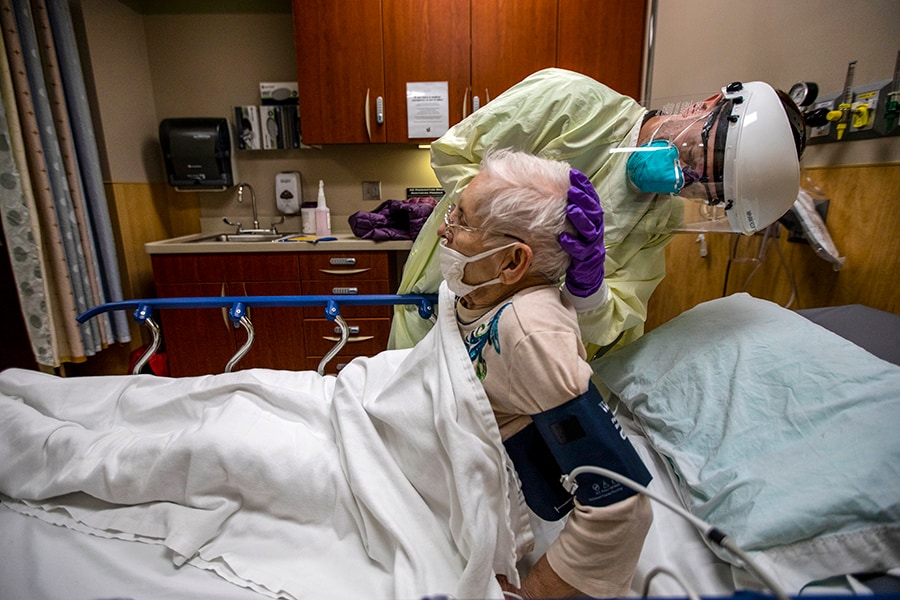
The US now has more than 100,000 Covid-19 patients in hospitals
The CDC has warned that this winter might be the toughest time in US public health history
 Image: Francine Orr / Los Angeles Times via Getty Images
Image: Francine Orr / Los Angeles Times via Getty Images
The number of COVID-19 patients in U.S. hospitals has surpassed 100,000 for the first time, nearly double the number from spring during the coronavirus’s deadly first wave, according to the COVID Tracking Project.
The Tracking Project on Wednesday put the number of patients at 100,226.
The relentless rise in hospitalizations follows a rapid climb in new cases, which now number more than 1 million every week. And deaths, a so-called lagging indicator that tends to spike after a rise in hospitalizations, have also been rising fast. They have now passed 270,000 in the U.S.
The numbers paint a sobering picture of what the next few weeks may look like, experts said. Hospitals in some places are nearing capacity, and if states are unable to curb the surge of new cases, those systems could soon become overwhelmed, as New York was in the spring.
“Any thinking person has to be worried,” said Philip Landrigan, director of a global public health program at Boston College. “That we have so many hospitalizations speaks to the fact that we have done a very poor job of controlling this pandemic. It is spreading very rapidly, and in many places, it is basically spreading out of control.”
©2019 New York Times News Service




